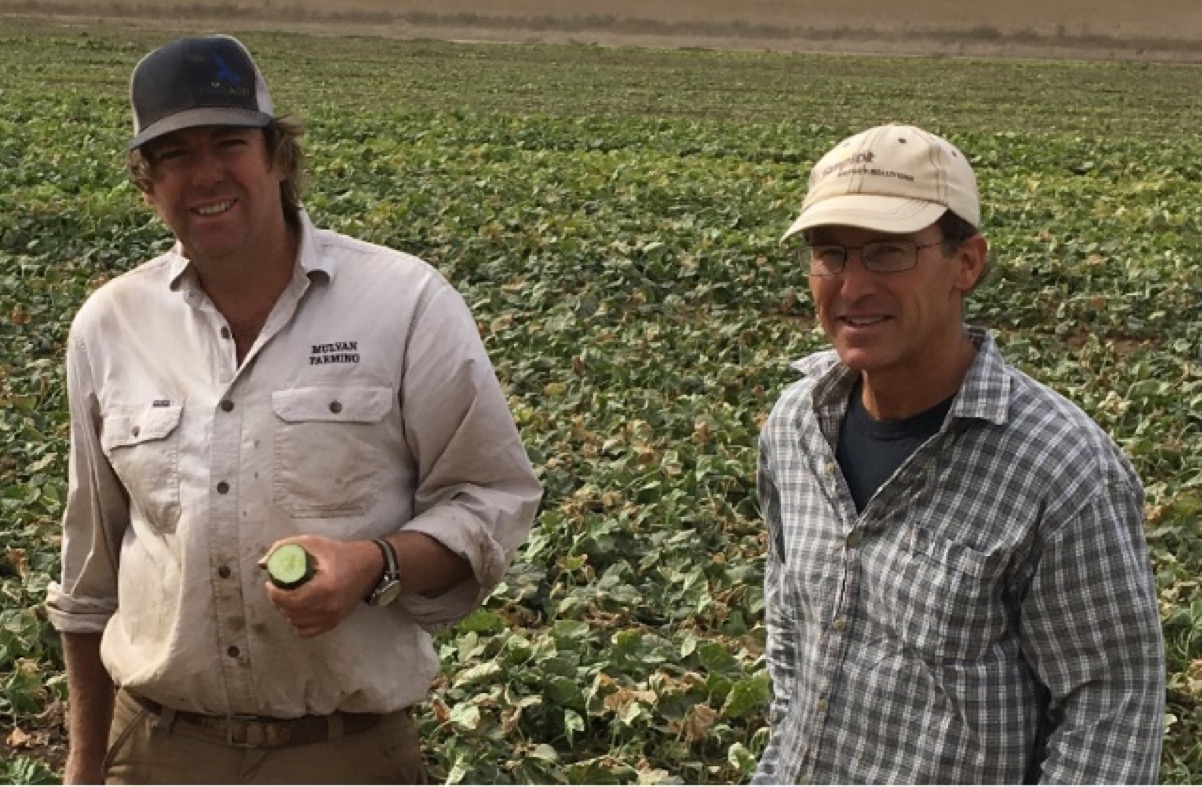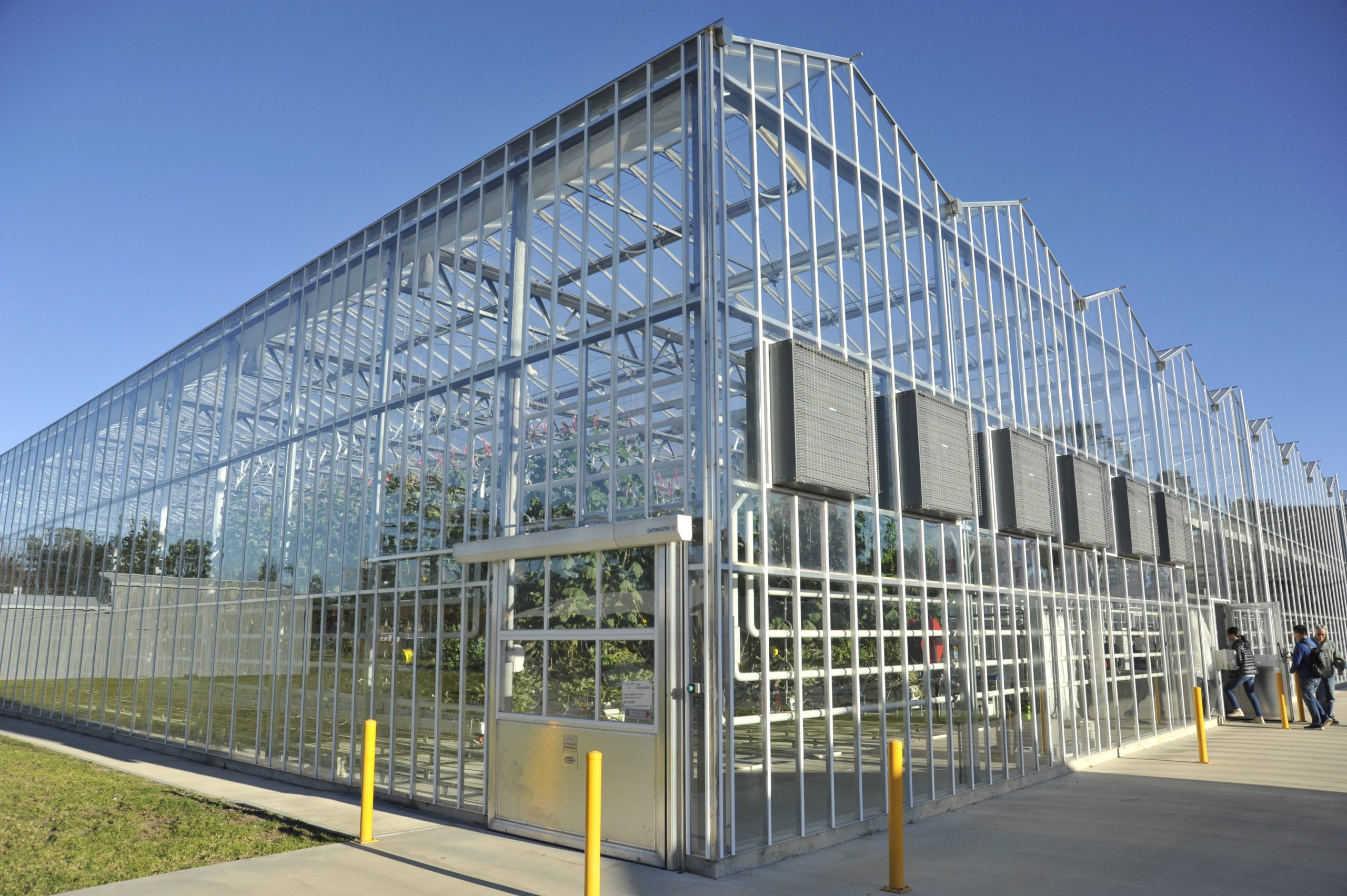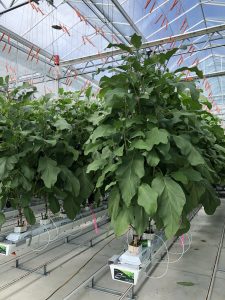
Gaining a wealth of knowledge around healthy soils
2 March 2022Final Report: A strategic approach to weed management for the Australian vegetable industry
2 March 2022This article is featured in Vegenotes 84 (Autumn 2022).
Facilitators
Project VG15038 was led by Professor Baohua Jia from Swinburne University of Technology.
Major findings
Project VG15038 investigated the use of smart glass and other renewable energy technologies in greenhouses. Running from 2016 to 2021, the project collaborated with another similar project – Research and operations to trial innovative glass and photovoltaic technologies in protected cropping (VG16070) – and aimed to evaluate the cost-effectiveness and viability of these technologies for use by vegetable growers.
Smart glass is glass with adjustable light transmittance and high thermal insulation, which blocks the heat from the sunlight in summer to reduce the cooling cost, and maintains the heat inside the glasshouse in winter to reduce the heating cost.
The other renewable technologies investigated were photovoltaic technology, which converts light energy to electricity, and solar thermal collectors, which are used to store heat from the sun in water.
Two main activities were undertaken by the research team. The first was to build a cost-effectiveness model that would take into account all the factors present in a single location.
“The model was built to consider the real weather conditions at different locations specifically in Australia, the sun irradiance, the structure of the greenhouse and the glazing materials, the different renewable energy strategies selected and the real installation cost,” project leader Professor Baohua Jia said.
“This would allow us to provide good and customised recommendations on the annual energy generation, energy cost saving, and payback period for growers.”
The second activity was to carry out a field test in collaboration with the Project VG16070 team at Western Sydney University. This allowed the team to input real data into the cost-effectiveness model.
The project’s activities resulted in several major findings. Firstly, the cost-effectiveness model suitable for Australian growers was found to accurately predict the energy savings of smart glass technologies, based on a grower’s greenhouse structure and local environment.
Another key finding was that smart glass can significantly save cooling costs and lower water consumption by up to 20 per cent, by blocking the thermal energy from the sun.
“Surprisingly – along with the decrease of temperature in greenhouses with smart glass – the plants evaporate less water, saving water consumption,” Professor Jia explained.
It was also found that different vegetables are impacted in different ways by the smart glass. Capsicums and eggplants grown in greenhouses with smart glass had slightly decreased quantity and improved quality, compared to those grown in greenhouses without smart glass.
Meanwhile the smart glass was seen to significantly increase the number of leaves on plants, leading researchers to conclude that it is most suitable for growing leafy vegetables.
Finally, the cost-effectiveness of renewable energy solutions was found to depend on the scale of installation. The larger the scale, the better the cost-effectiveness and the shorter the payback period.
Professor Jia explained that good maintenance is necessary to ensure high efficiency and a long life, thus maintenance costs should be considered in growers’ evaluations. The overall cost, however, is still a worthwhile investment.
“By adopting these energy efficient technologies, growers can significantly save on the running cost of greenhouses,” she said.
“In the meantime, the quality and yield can be maintained. As a result, the overall cost of production can be reduced to bring in more profit for growers. The lifetime of the proposed technologies is long, more than 10 years, and the maintenance cost is low. Therefore, there is expected to be a short payback period for those technologies.”
Professor Jia has several recommendations for growers. Installing smart glass is recommended, and the type should be chosen according to the location’s weather condition and the crop. Solar thermal management devices should be considered in most cases, especially in cold areas, to compensate for heating and cooling costs. Photovoltaic technologies can be integrated with solar thermal collectors to simultaneously generate electricity and hot water, and save space.
It was also recommended that growers consider replacing an energy curtain with flexible solar panels to generate electricity without modifying the infrastructure of the greenhouse or requiring extra space.
Background
Protected cropping requires climate to be controlled in greenhouses, with light, temperature, relative humidity and carbon dioxide enrichment accounting for a major part of the running costs. The cost varies greatly depending on crop, greenhouse design, and regional climate conditions. In general, the energy cost has increased significantly in recent times, resulting in smaller profit margins.
Because of this, it was deemed valuable to investigate solutions that are more cost-effective. While the current project has confirmed that smart glass and other renewable energy technologies are viable solutions, more research is needed.
The current smart film used is not specially designed for greenhouses; therefore, the productivity was slightly decreased. This can be improved by designing new smart film specific to greenhouses.
Further developing the modelling software to be more user-friendly for growers is also needed.
Acknowledgements
This project was funded by Hort Innovation using the vegetable research and development levy and contributions from the Australian Government.
Further information
Please contact Professor Baohua Jia by emailing bjia@swin.edu.au.
The final report for this project is available on InfoVeg. Click here to read more.
Cover image: Western Sydney University’s state-of-the-art greenhouse. Images courtesy of Professor Baohua Jia, Swinburne University of Technology.


